Caught on camera: wild animals enjoying our crops and mitigation measures to limit damage
Carrying out organic agriculture adjacent to a private nature reserve has its inherent pressures. One being the challenge of trying to live in harmony with wild animals attracted by the concentrated food sources. Wild animals can be resourceful and clever at getting what they want so the staff of the Sustainable Living and Agriculture Department must continually develop ways to protect the vegetables and fruits, while at the same time not harming the wildlife.
Mysterious diners appear in the vegetable gardens and on the crop terraces at Kadoorie Farm. Some chewed vegetables and fruits remain as leftovers from a foraging visit. We were keen to discover who the diners were.
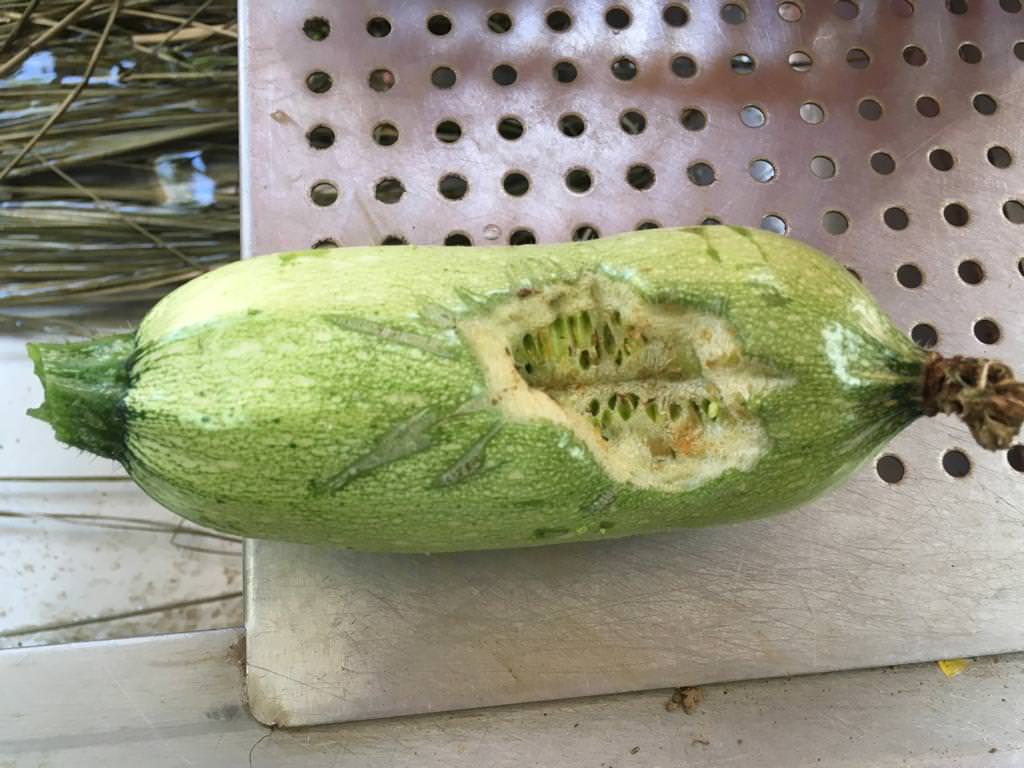
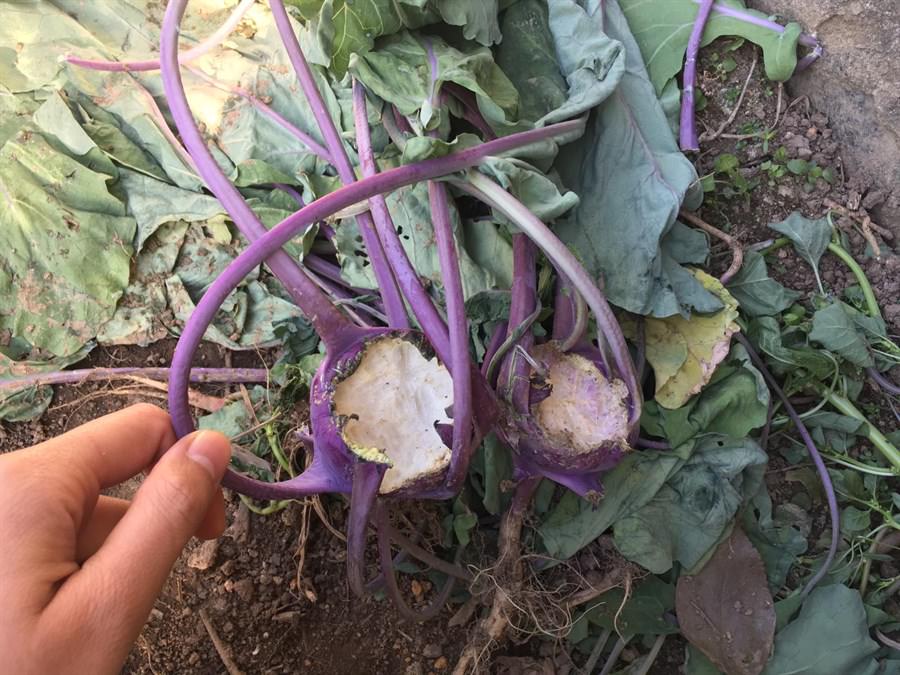
▲ Bite Marks on a Zucchini and a Purple Kohlrabi (Photo Credit: KFBG)
The investigation was carried out jointly by our Sustainable Living and Agriculture Department and Fauna Conservation Department. We observed bite marks on a zucchini and a purple kohlrabi and inferred that porcupines had damaged these vegetables. Then we set up more camera traps in other locations to widen our investigation.
From the images captured, we discovered that a group of East Asian Porcupines (Hystrix brachyura) were some of the mysterious diners entering the farmland. East Asian porcupines live in family groups of two to eight or are solitary. Their diet is mostly herbivorous - food includes various plant parts, such as roots, stems and fruits on the ground. They occasionally eat carrion. This species has a wide distribution in Hong Kong, but no record was found for Lantau Island.
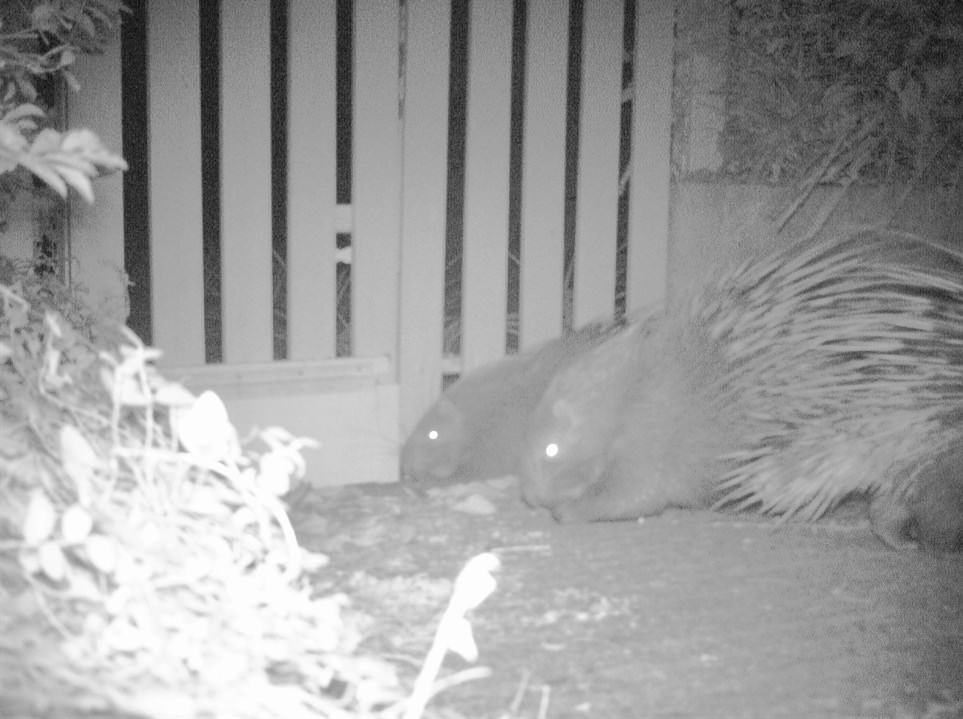
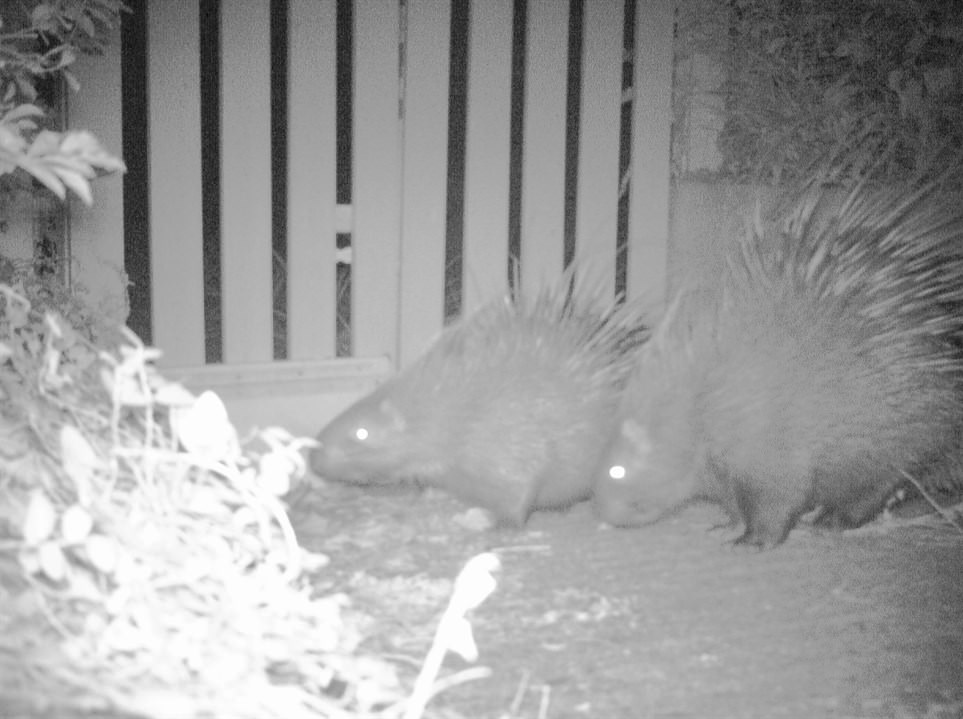
▲ Wild East Asian Porcupines captured by the infrared camera (Photo Credit: KFBG)
A Masked Palm Civet (Paguma larvata) was also captured on camera. It was eating guava, and the fruit seemed to be very delicious. Civets are essential seed dispersers, and the nutrients and moisture in their excretion helps the seeds germinate. Some plants produce large and hard fruits which are unattractive to birds, bats and other smaller animals and their seeds are dispersed by medium-sized terrestrial mammals such as Masked Palm Civets.
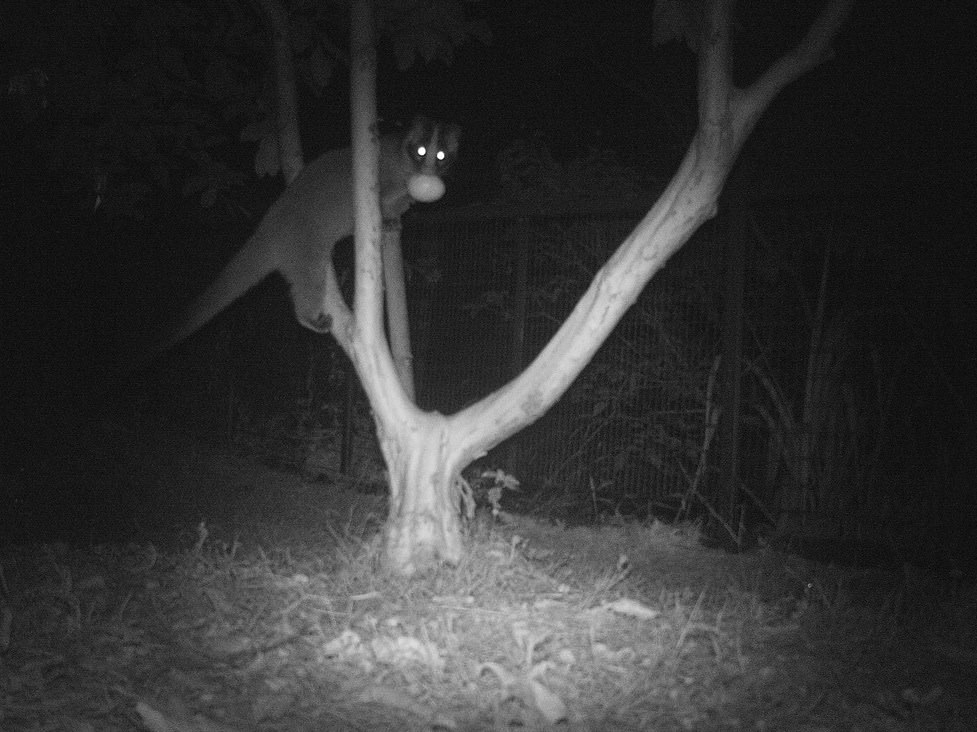
▲ Masked Palm Civet with guava (Photo Credit: KFBG)
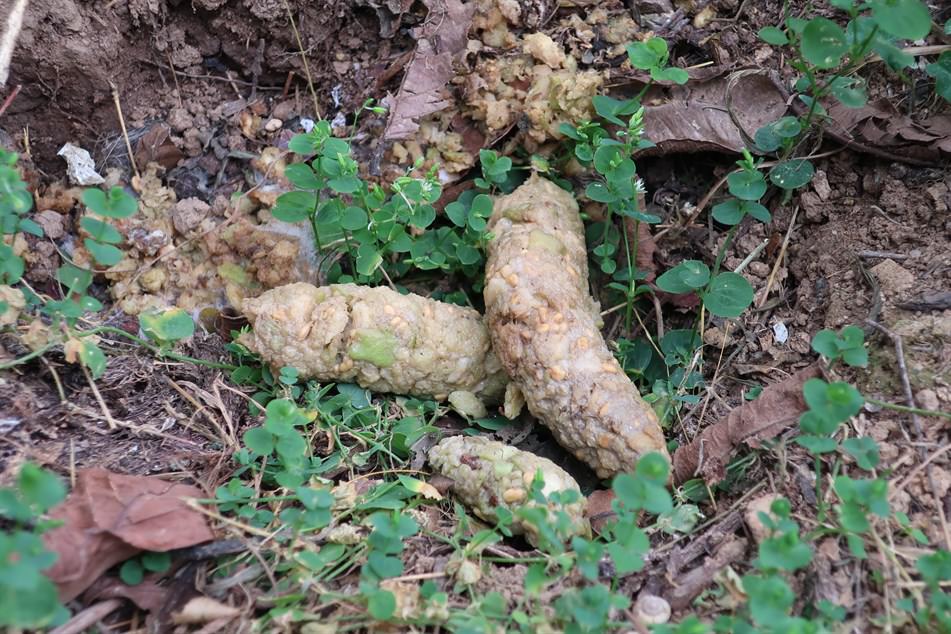
▲ Civet scats clearly containing many guava seeds (Photo Credit: KFBG)
Macaques were also caught on camera. They are ingenious animals that can grasp objects with their hands and feet. Eating food while hanging upside down is not difficult for them.
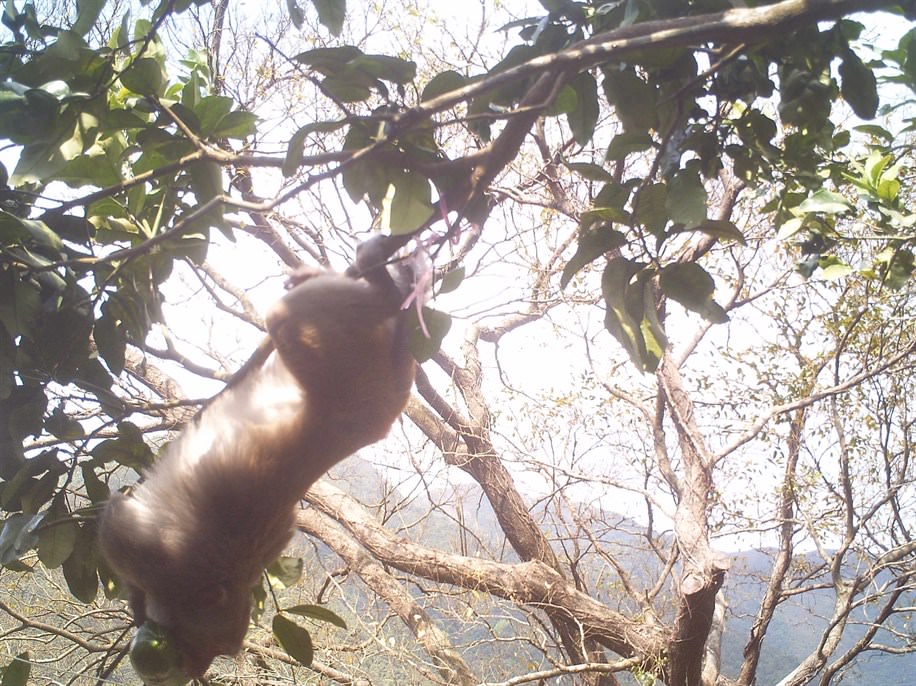
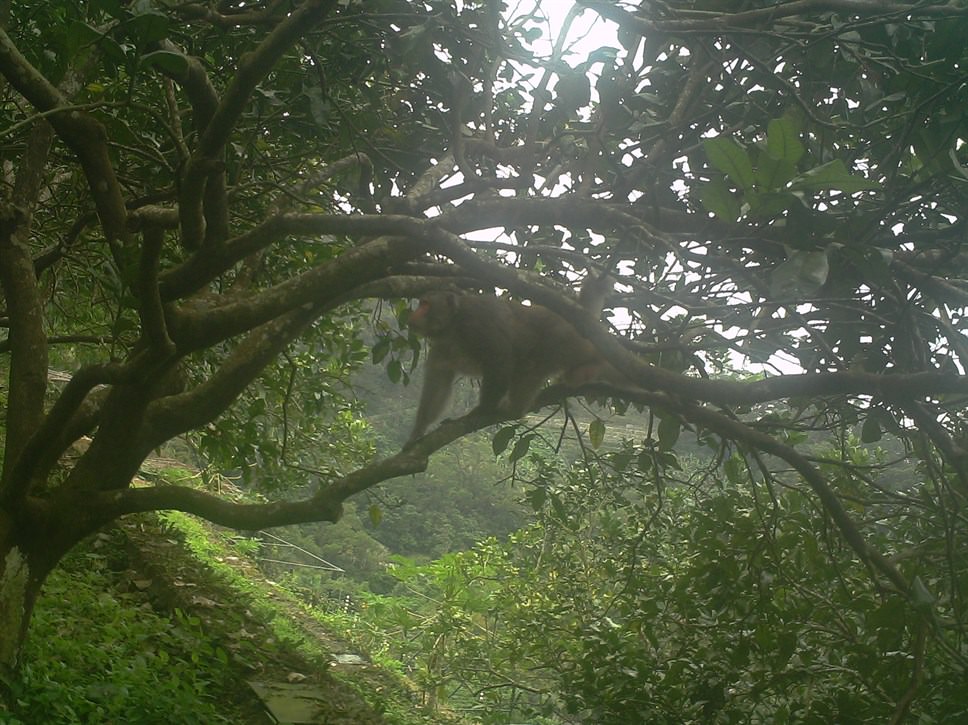
▲ Wild macaques on the fruit trees (Photo Credit: KFBG)
Although our camera captured these “culprits”, they should not be considered as an enemy. Ideally, humans can have a harmonious relationship with wildlife – the challenge is to find ways of limiting the damage to crops. Let’s use monkeys (Macaques) as an example. Monkeys have a natural foraging instinct. AFCD has planted more than 10,000 food plants on the Kowloon Hills since 1992 and monkeys can harvest the natural plants. They help our forests regenerate and maintain a balanced ecosystem. Although monkeys can cause conflicts with humans, these would be much worse if not for the planted food plants.
Mitigating the damage caused by wild animals
Farmers might feel frustrated when the crops are found damaged but anyone growing crops should remember the animals were here first and will naturally try to access an easy food source. It is the farmers’ responsibility to prepare adequately for the wildlife that’s known to surround their growing site, rather than observe the damage and loss and become frustrated with the wildlife.
Here at KFBG we adopt some simple environmentally friendly prevention methods and you may take this as a reference. Details are as follows:
- Use of physical barriers, e.g. wooden gates to prevent mammals such as wild boar,
- Plastic bags covering the fruits to prevent birds and insects,
- 1.4m tall fence with a hard surface (metal or cement) under the fence (less than 2.5cm gap in between) to prevent porcupines digging the soil,
- Electric fence to prevent monkeys,
- Harvest ripened fruits as soon as possible to avoid attracting the monkeys to forage in the area,
- Use of smelling scent to dispel the animals, e.g. garlic juice.

▲ Use of bird protection net, covering fruit with plastic bag and use of electric fence are environmentally friendly crop protection methods (Photo Credit: KFBG)
We welcome you to visit KFBG’s Eco-garden, One-dou Farm and Fruit Forest. You can find out more about our environmentally friendly practices and you may encounter some wild animals that share this space.

